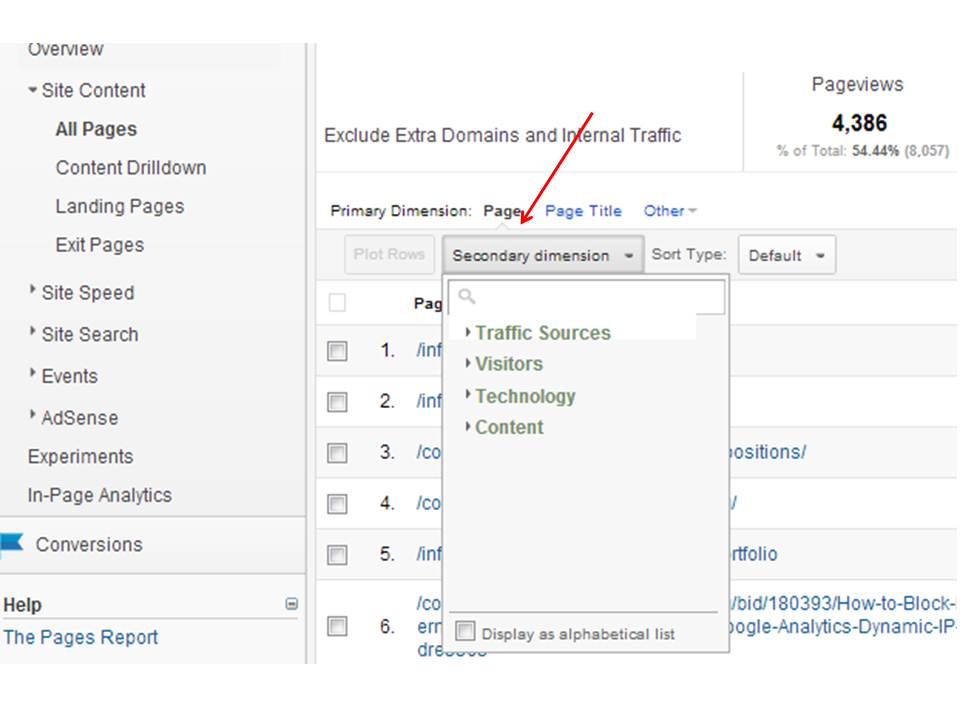Comprehending the Idea of a 'Secondary Dimension' in Google Analytics: What Does It Mean?
Comprehending the Idea of a 'Secondary Dimension' in Google Analytics: What Does It Mean?
Blog Article
Navigating the Midst of Secondary Measurement in Google Analytics: An In-depth Exploration on Its Capability
Secondary measurements, though seemingly simple at initial look, nurture a wide range of untapped prospective waiting to be taken advantage of. As we get started on this trip to explore the nuanced capability of second dimensions, we will discover exactly how this attribute can brighten patterns, unveil connections, and inevitably lead the method for notified decision-making in the digital landscape (what is a “secondary dimension” in google analytics?).
Recognizing Second Dimensions in Google Analytics

Understanding exactly how secondary measurements job is crucial for leveraging the complete power of Google Analytics. These dimensions aid you respond to more complicated concerns concerning individual behavior and the effectiveness of your site content and advertising and marketing efforts. You can utilize secondary dimensions to examine which tools or internet browsers are most typically used by visitors who make a purchase, or to contrast the bounce rates of different web traffic sources. By incorporating key metrics with secondary measurements, you can get important understandings that drive notified decision-making and optimization techniques - what is a “secondary dimension” in google analytics?.
Leveraging Second Dimensions for Data Analysis
Structure upon the fundamental understanding of just how secondary measurements boost information evaluation in Google Analytics, the utilization of these added layers of info comes to be critical in extracting useful understandings for educated decision-making and optimization strategies. By leveraging additional dimensions, analysts can dig much deeper right into the performance metrics by including more context to the main dimensions, hence discovering hidden patterns and connections that might not appear in the beginning look. This much deeper degree of evaluation makes it possible for organizations to much better understand user behavior, identify fads, and determine areas for renovation.
Moreover, second dimensions provide an even more detailed view of the information, allowing for segmentation based upon numerous parameters such as demographics, gadgets, web traffic resources, and more. This division helps with a much more granular evaluation, allowing organizations to tailor their methods and projects to particular target market segments for boosted targeting and personalization. Essentially, the tactical use secondary measurements encourages companies to make data-driven choices that drive growth and success in the electronic landscape.
Advanced Techniques for Second Dimension Implementation
Discovering complex methods to harness the complete possibility of additional measurements in Google Analytics elevates the deepness and sophistication of information evaluation for tactical decision-making. One innovative technique for applying secondary dimensions is the use of custom-made measurements. In addition, incorporating secondary measurements with sophisticated sections can give even a lot more granular understandings by applying multiple layers of segmentation to the information.
Interpreting Insights Via Second Measurements

When interpreting insights via second measurements, it is crucial to consider the you can try this out context of the data and how different measurements engage with each various other. Understanding which specific website traffic sources lead to higher conversion rates or determining which tools users choose for making purchases can supply actionable insights for enhancing advertising and marketing projects and improving overall website efficiency. By thoroughly checking out the information with second dimensions in mind, services can make educated decisions that drive meaningful results and improve their electronic presence.
Enhancing Performance With Additional Dimensions

One key way to optimize efficiency with second measurements is by segmenting information a lot more granularly. This enables you to separate particular elements that might be affecting your metrics and obtain a much better understanding of what drives success or failure in your electronic initiatives. For instance, by combining secondary dimensions such as 'gadget classification' and 'touchdown web page,' you can determine which tool kinds are most effective for specific landing web pages, Find Out More allowing you to customize your techniques appropriately.
Additionally, making use of second dimensions can aid you identify fads, patterns, and relationships that might not appear when analyzing data with key measurements alone. This much deeper level of evaluation can lead to more educated decision-making and ultimately boost the total efficiency of your internet site or digital advertising projects.
Final Thought
In final thought, second dimensions in Google Analytics play a crucial role in improving information analysis and giving deeper understandings right into internet site efficiency. By using sophisticated methods and translating the data successfully, organizations can enhance their approaches and enhance general efficiency. Understanding the performance of second measurements is essential for making informed decisions and driving success in the electronic landscape.
By leveraging secondary dimensions, analysts can delve deeper into the performance metrics by including even more context to the main dimensions, therefore uncovering hidden patterns and correlations that could not be obvious at very first glimpse. One sophisticated method for applying secondary measurements is the usage of custom dimensions.Having understood innovative methods like personalized dimensions and regex for second dimension application in Google Analytics, the next essential step is interpreting the valuable insights acquired via these advanced data segmentation methods. Translating insights with second measurements entails analyzing the relationships between the secondary and key dimensions selected, discovering patterns, fads, and relationships that may not be promptly apparent when looking at the data in its entirety.When translating insights via second measurements, it is necessary to think about the context of the information and exactly how different dimensions communicate with each other.
Report this page